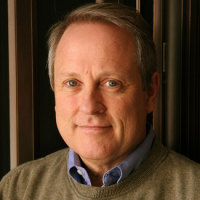In the summer of 2014, following the deaths in rapid succession of Eric Garner in Long Island, N.Y., Michael Brown in Ferguson, Mo., and Ezell Ford in Los Angeles, the words “Black Lives Matter” were so ubiquitous, so seamlessly and naturally part of nationwide protests and rallying cries, that it was easy to believe they arose spontaneously, their author unknown and unknowable.
But there is an author, and her words are an integral part of a movement, now emerging from its infancy, reminiscent in some ways of the civil rights battles of a half-century ago but clearly rooted in 21st-century events, consciousness and communication.
“We are in an exciting time,” said Patrisse Cullors, a 31-year-old artist, activist and organizer. “It’s pretty awesome to be here now, when so much is happening.”
Black Lives Matter was created following the 2013 acquittal of George Zimmerman, the man who shot and killed Trayvon Martin the year before in Sanford, Fla. Cullors was one of thousands who took to social media to express outrage and, in her words, to grieve.
She found her way to the Facebook page of Alicia Garza, special projects director for the National Domestic Workers Alliance. Garza concluded a post with the words “our lives matter.” Cullors tweaked it a bit and added a hashtag; #BlackLivesMatter became a social media platform for discussion and organizing. Cullors and Garza, along with Opal Tometi, executive director of Black Alliance for Just Immigration, made #BlackLivesMatter a nationwide movement — not yet a household name.
“Then Mike Brown was murdered,” said Cullors, speaking of the 18-year-old unarmed black man fatally shot on Aug. 9, 2014, by a Ferguson police officer. “We saw the slogan go viral. We said, ‘Let’s continue to build this narrative.’ It was awesome.”
Cullors speaks with an engaging blend of vocabulary — a hefty dose of political activism peppered with just a touch of her San Fernando Valley upbringing.
She was born and raised in Canoga Park, a West Valley community of relatively affordable housing — and troubled by gang violence. It is surrounded by the wealthier and more privileged areas that a generation earlier produced the vacuous “Valley Girl” image. Her mother was single and on welfare, her father in and out of jail and prison because of drug convictions. Cullors felt oppressed by homophobia as she came to terms with her own sexual orientation. Living in poverty shaped her.
“I had a significant amount of rage as a child,” Cullors said, but she began to find words to express herself while a student in the humanities magnet program at Cleveland High School in Reseda. She grew intellectually and artistically — but it was not an easy time.
She came out at 15 and was pushed out of her home.
Then her brother, who struggled with mental health problems, was arrested, jailed and beaten by deputies. It was an incident that affected her deeply.
After high school, Cullors began her second education, this time as a volunteer for the Bus Riders Union. The organization is a transportation
advocacy group rooted in the political and organizing theory of the
Labor / Community Strategy Center. Its activists were most vocal and visible protesting proposed bus fare increases, but behind the scenes they studied the history and manifestation of discrimination, poverty and environmental injustice. For Cullors, it was a heady experience to be able to confront L.A.’s mammoth Metropolitan Transportation Authority but also enlightening to discover the role that the Los Angeles County Board of Supervisors plays in running the agency and then the role the supervisors have in overseeing county jails and the deputies who staff them.
Cullors was with the Bus Riders Union for 11 years. She left in 2012 with a virtual graduate degree in power and organizing. She created the Dignity and Power Now/Coalition to End Sheriff Violence in L.A. Jails in 2012, just as a county commission was doing the work assigned to it by a nervous county Board of Supervisors: Get to the bottom of charges by the American Civil Liberties Union of Southern California and stories in the Los Angeles Times, WitnessLA and other media outlets about reports that jail inmates routinely encountered the same experience as her brother: physical abuse.
Los Angeles County, with its 10 million residents and its vast geographic spread, also deals with race and class distinctions that generally keep the typical white voter and taxpayer from knowing much about the experiences of the mostly African American and Latino people incarcerated in its jails. The official Commission on Jail Violence made the conditions of inmates — many of whom had not been convicted but were there awaiting trial — harder to ignore.
Cullors made certain that inmates and their families were part of the conversation. She recruited members to her coalition as they left the jail, and made certain they networked into a larger community of inmates that had suffered abuse. She encouraged them to be in the thick of the campaign for Los Angeles County sheriff, to question candidates on their views of civilian oversight, as well as on diversion from jail of people dealing with mental issues and transparency of Sheriff’s Department investigations.
It is fair to say that the participation of Dignity and Power Now played an integral role in shaping the sheriff’s campaign and the positions of the candidates.
In more recent months, as a working group studies the form that civilian oversight ought to take — with Dignity and Power Now members weighing in at every step — Cullors has been traveling across the county, addressing the now 23 chapters of Black Lives Matter, speaking even in Europe about issues of race, gender, class and liberation.
“Given that there’s so much attention around state violence right now,” she said, “we believe we are in a good position to discuss these issues in Los Angeles: demilitarizing the Sheriff’s Department, ensuring significant accountability when law enforcement hurts, harms or kills our loved ones.
I think we’ve been really successful. It’s encouraging.”
She added, for good measure: “It’s awesome.”




















